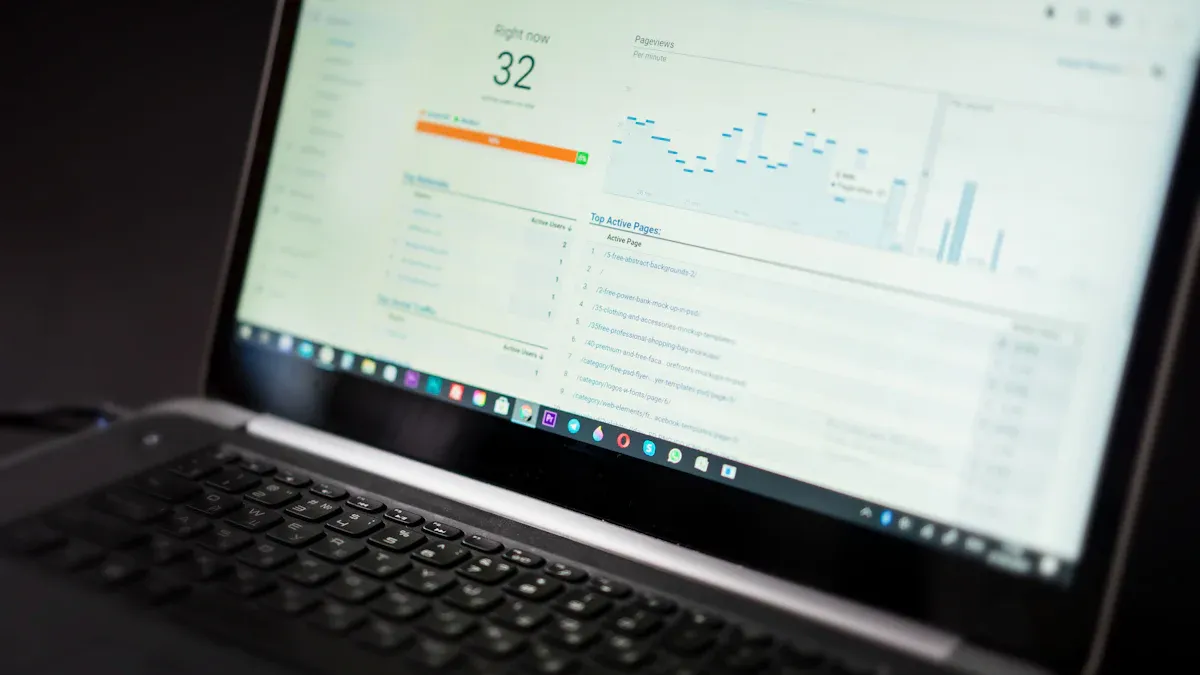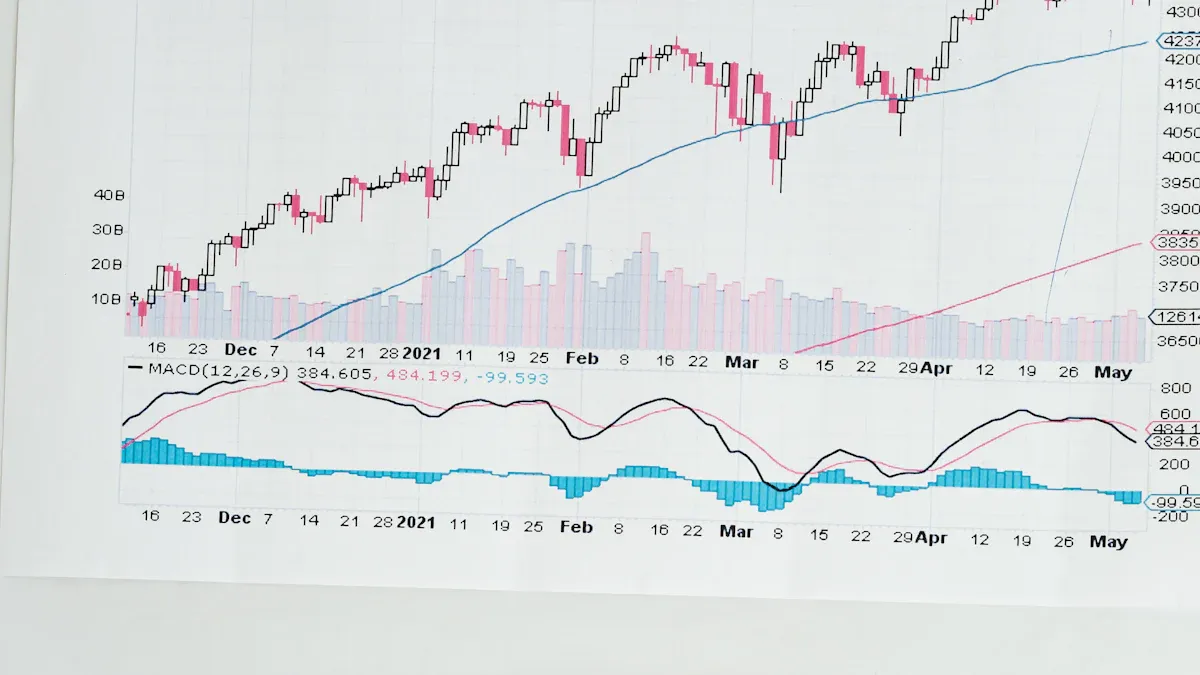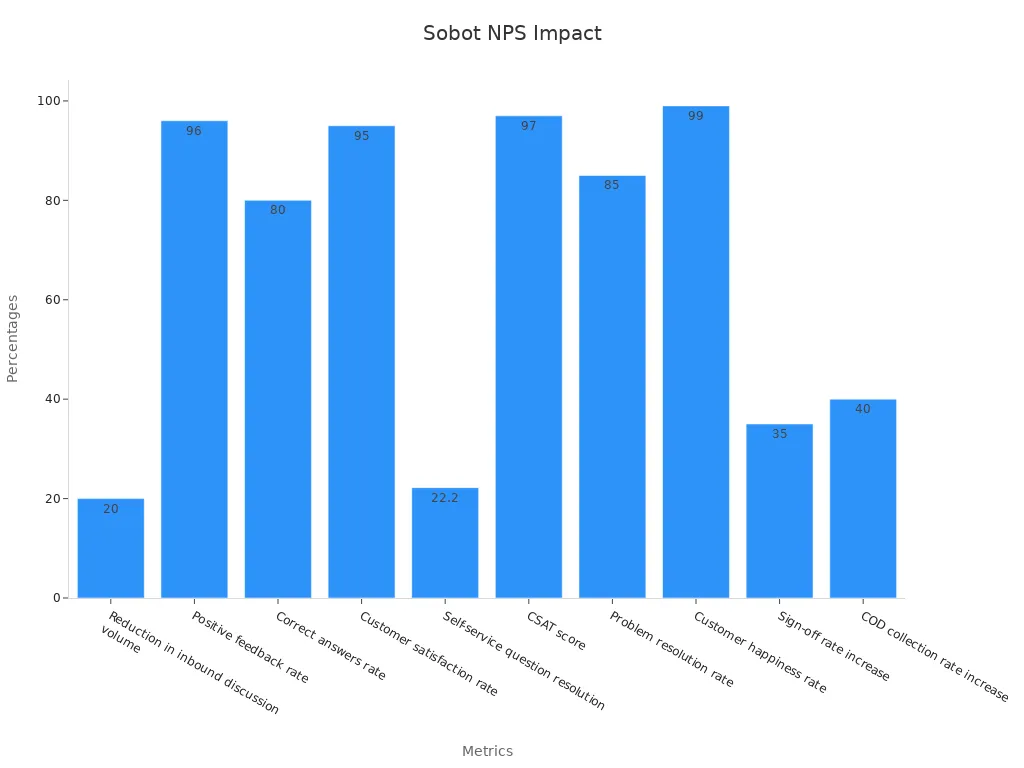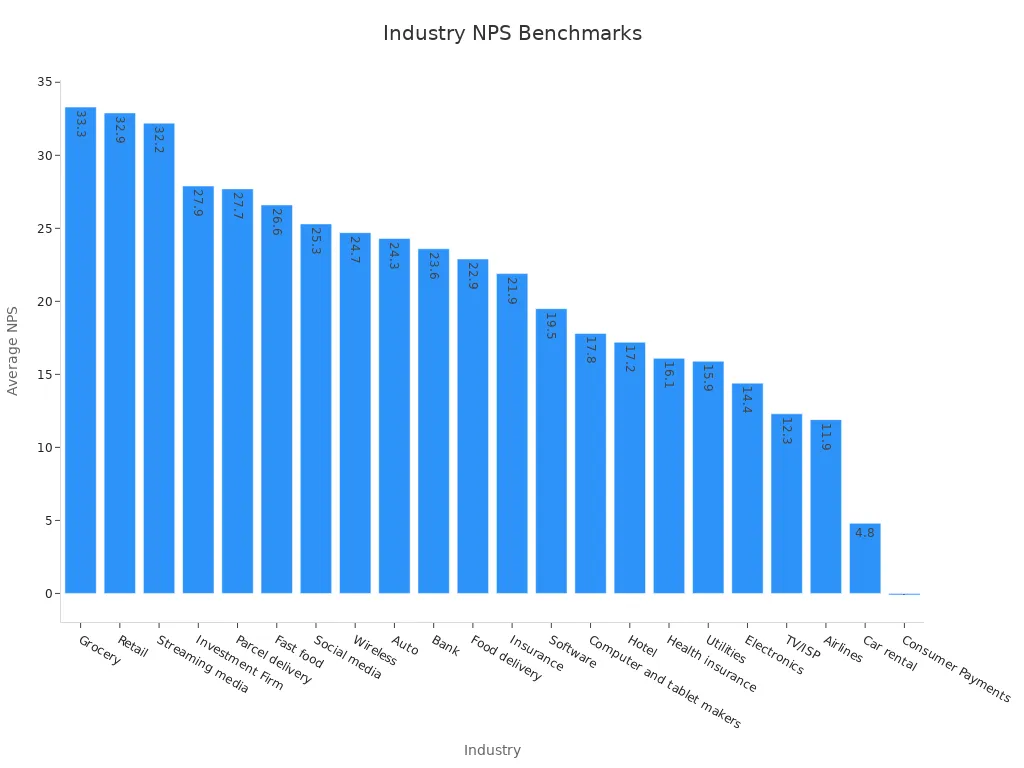Industry-wide analysis of Net Promoter Scores

The net promoter score, or NPS, serves as a key indicator of customer loyalty. It measures how likely customers are to recommend your business to others, offering valuable insights into their satisfaction and trust. In 2025, comparing net promoter scores by industry has become essential. For example, the healthcare industry improved to 53, while eCommerce rose by 6 points. Such benchmarks reveal which sectors excel and where challenges persist. By aligning your strategies with these insights, you can refine customer experiences and drive growth. Sobot's solutions empower businesses to achieve higher NPS by enhancing customer interactions.
Understanding Net Promoter Score (NPS)
What is NPS and how is it calculated?
The net promoter score, or NPS, is a simple yet powerful tool for measuring customer loyalty. It helps you understand how likely your customers are to recommend your business to others. To calculate NPS, you start by asking your customers a single question: “On a scale of 0 to 10, how likely are you to recommend our product or service?” Based on their responses, you categorize them into three groups:
- Promoters (9-10): These are your most loyal customers who actively promote your brand.
- Passives (7-8): These customers are satisfied but not enthusiastic enough to recommend you.
- Detractors (0-6): These customers are unhappy and may discourage others from using your services.
Once you have these categories, calculate the percentage of Promoters and Detractors. Subtract the percentage of Detractors from the percentage of Promoters to get your NPS. For example, if 70% of your customers are Promoters and 20% are Detractors, your NPS would be 50.
Why NPS is a critical metric for customer loyalty in 2025
In 2025, NPS remains a vital metric for understanding customer loyalty. It reflects the emotional connection customers have with your brand. High NPS scores often indicate strong customer advocacy, which can lead to repeat purchases and referrals. Studies show that 86% of customer experience professionals believe loyalty is becoming more important. Additionally, 87% agree that investing in loyalty initiatives delivers a solid return on investment. With global consumer advocacy reaching 70%, NPS helps you measure and improve this critical aspect of your business.
Common standards and benchmarks for NPS
NPS benchmarks vary across industries, offering valuable insights into your performance compared to competitors. For example, the healthcare industry has an average NPS of 53, while eCommerce has seen a 6-point increase recently. These benchmarks help you identify where your business stands and what improvements are needed. Research also highlights that NPS serves as a reliable predictor of future sales growth. By monitoring changes in your NPS, you can gauge your brand’s health and make informed decisions to enhance customer satisfaction.
Net Promoter Scores by Industry in 2025

High-performing industries and their NPS benchmarks
Certain industries consistently achieve high NPS benchmarks, reflecting their ability to deliver exceptional customer experiences. For example, the technology sector often leads the way. Companies like Microsoft Office 365 have implemented specialized NPS teams to analyze customer feedback and share insights across their organizations. This approach fosters a culture of customer empathy and drives improvements in customer retention. By using both relationship and transactional NPS surveys, businesses in this sector have achieved up to a 4.9% increase in retention rates.
The fintech subindustry also stands out. It has embraced technology to enhance customer experiences, with 71% of customers reporting that managing products across multiple financial providers has become easier. These advancements contribute to a good NPS score, showcasing the importance of innovation and customer-centric strategies. High-performing industries demonstrate that a focus on customer feedback and technological integration can lead to superior NPS benchmarks.
Industries with lower NPS and the challenges they face
Not all industries achieve high NPS ratings. Some face significant challenges that impact their scores. Common issues include poor billing practices, subpar product quality, and negative customer sentiment. For instance, companies with aggressive billing practices, such as negative-option billing, often frustrate customers. This dissatisfaction directly lowers their NPS. Similarly, industries with product reliability issues, like certain eCommerce platforms, struggle to maintain customer trust.
The table below highlights key factors contributing to lower NPS ratings:
| Factor | Description |
|---|---|
| Billing Practices | Aggressive or misleading billing practices lead to customer dissatisfaction. |
| Product Quality | Poor product quality frustrates customers and reduces trust. |
| Customer Sentiment | Negative trends, such as scandals, harm customer perceptions and NPS. |
Industries like finance often face additional challenges. Scandals and trust issues can significantly impact customer sentiment, making it harder to achieve a good NPS score. Addressing these challenges requires a commitment to transparency, quality, and customer-focused solutions.
Average NPS scores across key sectors
Understanding the average NPS score across industries helps you gauge your performance. In 2025, the retail sector has shown steady improvement, with an average NPS score of 50. This growth reflects efforts to enhance customer experiences through personalized interactions and omnichannel support. The financial services industry, despite its challenges, maintains an average NPS score of 45. This score highlights the sector's ongoing efforts to rebuild trust and improve service quality.
The eCommerce industry has also seen progress, with a 6-point increase in its average NPS score. This improvement stems from advancements in technology and a focus on seamless customer journeys. These benchmarks provide valuable insights into industry performance and help you identify areas for improvement. By comparing your NPS to these averages, you can set realistic goals and develop strategies to enhance customer loyalty.
How Sobot supports industries in improving their NPS
Improving your Net Promoter Score (NPS) requires tools that enhance customer interactions and streamline operations. Sobot offers solutions tailored to meet these needs, helping businesses across industries achieve higher NPS benchmarks. With advanced technologies like AI-powered Voicebots and omnichannel communication platforms, Sobot empowers you to deliver exceptional customer experiences.
Unified Communication for Better Customer Engagement
Sobot's Voice/Call Center integrates all communication channels into a single workspace. This unified approach allows your agents to manage calls, emails, and chats efficiently. Features like intelligent IVR and smart call routing ensure customers reach the right agent quickly, reducing frustration. The platform’s 99.99% uptime guarantees reliable service, even during peak hours. By improving first-contact resolution rates, Sobot helps you build trust and loyalty, which directly impacts your NPS.
Leveraging AI for Enhanced Support
Sobot’s AI solutions transform customer support by automating repetitive tasks and providing real-time assistance. AI agents handle inquiries 24/7, ensuring customers receive instant responses. For example, in retail and eCommerce, Sobot AI reduces cart abandonment by offering personalized product recommendations. These capabilities not only improve customer satisfaction but also boost your NPS by addressing pain points effectively.
Proven Results Across Industries
Sobot’s impact on NPS is evident in its metrics. The table below highlights key achievements:
| Metric Description | Value |
|---|---|
| Brands served | 10,000 |
| Reduction in inbound discussion volume | 20% |
| Positive feedback rate | 96%+ |
| Correct answers rate | 80%+ |
| Customer satisfaction rate | 95% |
| Self-service question resolution | 22.2% |
| CSAT score | 97% |
| Problem resolution rate | 85% |
| Customer happiness rate | 99% |
| Sign-off rate increase | 35% |
| COD collection rate increase | 40% |
These figures demonstrate how Sobot’s solutions drive measurable improvements in customer loyalty and satisfaction.
Real-World Success Stories
Samsung’s collaboration with Sobot showcases the effectiveness of these solutions. By integrating Sobot’s contact center platform, Samsung achieved a 97% customer satisfaction rate and a 30% increase in agent efficiency. This success highlights how Sobot’s tools can help you unify communication channels, improve data connectivity, and deliver personalized service—all essential for boosting your NPS.
Visualizing Sobot’s Impact
The chart below illustrates Sobot’s effectiveness in enhancing NPS metrics across industries:

Why Sobot is Your Partner for NPS Improvement
Sobot’s solutions are designed to address industry-specific challenges. Whether you’re in retail, financial services, or eCommerce, Sobot provides tools to optimize customer interactions. Features like AI-powered Voicebots, global number availability, and seamless CRM integration ensure your business stays ahead. By leveraging Sobot’s technologies, you can align your strategies with industry benchmarks and exceed customer expectations.
With Sobot, improving your Net Promoter Score becomes achievable. Its innovative solutions not only enhance customer satisfaction but also position your business for long-term success.
Key Trends and Insights in Industry-wide NPS Data
Emerging trends in customer satisfaction and loyalty
In 2025, businesses are adopting innovative approaches to understand and improve customer satisfaction. Ethnographic research is gaining popularity as companies realize the importance of combining qualitative insights with quantitative data. Mobile optimization is another key trend. It ensures survey responses are more accurate and complete, leading to better insights into customer experiences. Mixed-methods research, which blends qualitative and quantitative approaches, is becoming essential for understanding complex markets. This method improves the reliability of findings and provides actionable insights.
Additionally, mobile-friendly surveys are helping businesses collect reliable data. These surveys are crucial for identifying areas where customer satisfaction can be improved. Companies are also investing heavily in market research to quantify the value of customer interactions. This investment fosters loyalty and drives business growth. By combining these strategies, businesses can gain a comprehensive view of customer needs and enhance their net promoter score.
Factors driving NPS variations across industries
Several factors influence how nps varies across industries. The type of business plays a significant role. For instance, B2C companies often focus on transactional experiences, while B2B businesses emphasize long-term relationships. Customer segments also impact nps. Buyers and end users have different expectations, which can lead to varying satisfaction levels.
Cultural and geographical differences further affect nps scores. For example, Europeans tend to rate conservatively, while East Asians may give higher ratings. External events, such as the COVID-19 pandemic, have also caused fluctuations. A study by Qualtrics revealed a 15-point drop in nps for industries like travel and hospitality during the pandemic. Understanding these factors helps businesses identify areas for improvement and adapt their strategies accordingly.
| Factor | Description |
|---|---|
| Type of business (B2B vs. B2C) | B2C focuses on transactions, while B2B emphasizes long-term relationships. |
| Type of customers | Different customer segments have varying satisfaction thresholds. |
| Industry | Some industries naturally score higher due to less stressful customer interactions. |
| Major events | Events like COVID-19 can significantly impact nps scores. |
| Culture and geography | Cultural differences influence how customers rate their experiences. |
Lessons from industries with the highest and lowest NPS
Industries with high nps scores, such as technology and retail, prioritize customer-centric strategies. For example, 75% of banks have shifted to customer-focused business models. These industries invest in tools and processes that enhance customer experiences. They also use customer feedback to refine their services, which leads to higher satisfaction and loyalty.
On the other hand, industries with low nps scores, like banking, face challenges such as declining trust. The average nps for banking dropped from 37 to 30 in recent years. This decline highlights the need for transparency and improved service quality. Financial companies are addressing these issues by setting tangible customer experience targets. By learning from high-performing industries, businesses can adopt best practices to improve their nps and build stronger customer relationships.
The role of Sobot's Voice/Call Center in addressing NPS challenges

Improving your Net Promoter Score (NPS) often requires addressing common customer service challenges. Sobot’s Voice/Call Center provides tools that help you tackle these issues effectively. By enhancing communication, streamlining workflows, and leveraging advanced technology, Sobot empowers you to deliver better customer experiences.
Resolving Customer Frustrations with Intelligent Call Routing
One major factor that lowers NPS is customer frustration caused by long wait times or misrouted calls. Sobot’s Smart Call Routing ensures that customers connect with the right agent quickly. This feature uses rule-based workflows to direct calls based on customer needs, reducing wait times and improving first-contact resolution rates. For example, businesses using Sobot have reported a 35% increase in first-call resolutions, which directly boosts customer satisfaction.
Enhancing Agent Efficiency with Unified Workspaces
Your agents play a critical role in shaping customer experiences. Sobot’s Unified Workspace equips them with all the tools they need in one place. Agents can access customer histories, manage calls, and track interactions seamlessly. This integration minimizes errors and ensures consistent service. Studies show that businesses with unified systems see up to a 20% improvement in agent productivity, which positively impacts NPS.
Leveraging AI to Address Customer Needs
Sobot’s AI-powered Voicebot handles repetitive queries, freeing your agents to focus on complex issues. The Voicebot provides 24/7 support, ensuring customers receive immediate assistance even outside business hours. In industries like retail, this feature has reduced cart abandonment rates by over 30%, contributing to higher NPS scores.
Reliable Performance for Consistent Service
Sobot’s platform guarantees 99.99% uptime, ensuring uninterrupted service. This reliability builds trust and enhances customer loyalty. With global number availability and time zone support, you can serve customers worldwide without disruptions.
By adopting Sobot’s Voice/Call Center, you can address NPS challenges head-on. Its intelligent features and reliable performance help you create positive customer experiences, ultimately driving loyalty and advocacy.
Interpreting Your NPS in Comparison to Industry Benchmarks
What does your NPS mean for your business?
Your net promoter score (NPS) is more than just a number; it reflects how your customers perceive your brand. A high NPS indicates strong customer loyalty and advocacy, which can lead to repeat business and referrals. On the other hand, a low NPS suggests dissatisfaction and highlights areas needing improvement. Comparing your NPS to industry benchmarks helps you understand your position in the market. For instance, if your NPS is 45 in an industry where the average is 30, you are outperforming competitors. However, if your score is below the benchmark, it signals the need for immediate action.
The NICE Satmetrix Net Promoter benchmark database provides valuable insights into how businesses compare to their peers. This database collects data through opt-in email surveys sent to decision-makers and influencers. The table below summarizes key aspects of this benchmarking process:
| Aspect | Details |
|---|---|
| Benchmark Source | NICE Satmetrix Net Promoter benchmark database |
| Data Collection Method | Opt-in email surveys sent to business decision-makers or major influencers |
| Survey Period | Research for the 2023 study was conducted during March-May of 2023; 2022 study in May-June 2022 |
| Purpose of Survey | To compare company performance against industry averages and competitors |
By analyzing your NPS in this context, you can identify whether your business is thriving or struggling in customer satisfaction.
Identifying gaps and opportunities for improvement
Understanding your NPS allows you to pinpoint gaps in your customer experience strategy. For example, a low NPS might indicate issues such as poor product quality, long wait times, or inadequate customer support. These gaps provide opportunities for targeted improvements. Metrics like customer lifetime value (CLV) and churn rates can further clarify where you need to focus. The table below highlights the importance of these metrics:
| Metric | Importance in Identifying Gaps and Opportunities |
|---|---|
| Net Promoter Score (NPS) | Measures customer loyalty and satisfaction. |
| Customer Lifetime Value (CLV) | Indicates long-term customer value and retention. |
| Churn Rates | Highlights customer loss and areas for improvement. |
In addition to metrics, customer demographics and geography can influence NPS. Younger customers often rate experiences more critically, while cultural differences affect scoring tendencies. For instance:
- Key users prioritize day-to-day functionality.
- Administrators focus on cost-effectiveness and ROI.
- Decision-makers consider overall business value.
By analyzing these factors, you can uncover actionable insights. For example, if younger customers consistently rate your service poorly, you might need to enhance your digital experience or communication style.
Setting realistic goals based on industry-specific NPS benchmarks
Setting achievable NPS goals requires understanding industry-specific benchmarks. These benchmarks provide a clear picture of what success looks like in your sector. For instance, the grocery industry has an average NPS of 33.3, while the software industry averages 19.5. If you operate in the software sector, aiming for an NPS of 40 might be unrealistic. Instead, targeting a score slightly above the industry average would be more practical.
The table below outlines average NPS scores across various industries:
| Industry | Average NPS |
|---|---|
| Grocery | 33.3 |
| Retail | 32.9 |
| Streaming media | 32.2 |
| Investment Firm | 27.9 |
| Parcel delivery | 27.7 |
| Fast food | 26.6 |
| Social media | 25.3 |
| Wireless | 24.7 |
| Auto | 24.3 |
| Bank | 23.6 |
| Food delivery | 22.9 |
| Insurance | 21.9 |
| Software | 19.5 |
| Computer and tablet makers | 17.8 |
| Hotel | 17.2 |
| Health insurance | 16.1 |
| Utilities | 15.9 |
| Electronics | 14.4 |
| TV/ISP | 12.3 |
| Airlines | 11.9 |
| Car rental | 4.8 |
| Consumer Payments | -0.1 |

For B2B industries, benchmarks differ. For example, architecture leads with an average NPS of 64, while digital marketing agencies average 30. The chart below illustrates these benchmarks:

Using these benchmarks, you can set realistic goals that align with your industry. For instance, if you are in the retail sector, aiming for an NPS of 35 would position you above the industry average. By setting achievable targets, you can focus on incremental improvements that drive long-term success.
Leveraging Sobot's solutions to align with or exceed industry standards
Achieving or surpassing industry benchmarks for Net Promoter Score (NPS) requires tools that optimize customer interactions and improve operational efficiency. Sobot’s solutions provide businesses with the resources they need to meet these goals. By leveraging advanced technologies like AI-powered Voicebots and omnichannel communication platforms, you can enhance customer satisfaction and loyalty.
Unified Communication for Seamless Customer Experiences
Sobot’s Voice/Call Center integrates all communication channels into one workspace. This unified system allows your agents to handle calls, emails, and chats without switching platforms. Features like Intelligent IVR and Smart Call Routing ensure customers connect with the right agent quickly. For example, businesses using Sobot have reported a 35% increase in first-call resolution rates, which directly improves customer satisfaction and NPS.
Tip: A unified communication system reduces customer frustration and builds trust, helping you align with industry benchmarks for NPS.
AI-Powered Tools for Enhanced Support
Sobot’s AI solutions transform customer service by automating repetitive tasks and providing real-time assistance. AI agents offer 24/7 support, ensuring customers receive immediate responses. In retail and eCommerce, Sobot AI reduces cart abandonment rates by over 30% through personalized product recommendations. These tools not only address customer pain points but also boost NPS by delivering consistent and efficient service.
Real-World Success Stories
Samsung’s partnership with Sobot demonstrates the effectiveness of these solutions. By integrating Sobot’s contact center platform, Samsung achieved a 97% customer satisfaction rate and a 30% increase in agent efficiency. This success highlights how Sobot’s tools help businesses unify communication channels, improve data connectivity, and deliver personalized service—all essential for exceeding industry standards.
Reliable Performance for Global Reach
Sobot’s platform guarantees 99.99% uptime, ensuring uninterrupted service. With global number availability and time zone support, you can serve customers worldwide without disruptions. This reliability builds trust and enhances customer loyalty, positioning your business to outperform competitors in NPS benchmarks.
Data-Driven Insights for Continuous Improvement
Sobot’s solutions include advanced analytics that provide actionable insights into customer interactions. Features like Call Tracking and AI Insights help you identify areas for improvement. For example, businesses using Sobot have seen a 20% reduction in inbound discussion volume, allowing agents to focus on complex issues. These insights enable you to refine your strategies and align with industry-specific NPS benchmarks.
Note: Data-driven decision-making is key to improving customer satisfaction and achieving higher NPS scores.
Why Sobot is Your Partner for NPS Success
Sobot’s solutions are designed to address industry-specific challenges. Whether you operate in retail, financial services, or eCommerce, Sobot provides tools to optimize customer interactions. Features like AI-powered Voicebots, seamless CRM integration, and omnichannel support ensure your business stays ahead. By leveraging Sobot’s technologies, you can align your strategies with industry benchmarks and exceed customer expectations.
With Sobot, improving your Net Promoter Score becomes achievable. Its innovative solutions not only enhance customer satisfaction but also position your business for long-term success.
Practical Steps to Improve Your NPS

Strategies for enhancing customer experience and loyalty
Improving customer experience and loyalty requires actionable strategies. Start by increasing survey response rates. A higher response rate gives you a clearer picture of customer sentiment. Offer multiple feedback channels, such as email, chat, and social media, to make it easier for customers to share their thoughts. Use open-ended questions in your surveys to uncover the reasons behind their satisfaction or dissatisfaction. Consistency in survey wording also ensures unbiased results.
Engage passive customers actively. These individuals, often neutral in their feedback, can become promoters with the right approach. Incentivize feedback thoughtfully, offering small perks like discounts or loyalty points. Commit to continuous improvement by addressing common complaints and enhancing your products or services. For example, analyzing purchasing patterns can help you detect trends and tailor your offerings, boosting customer satisfaction and loyalty.
Using customer feedback to drive actionable improvements
Customer feedback is a goldmine for actionable insights. Open-ended responses reveal the reasons behind your nps scores, highlighting areas for improvement. Use AI tools to categorize feedback and identify trends. For instance, exceptional customer service often emerges as a key driver of satisfaction. Focus groups and social media listening tools can provide qualitative insights, while advanced metrics monitor brand sentiment.
Companies like Hilton have successfully used customer feedback to refine their services and loyalty programs, resulting in increased satisfaction. Similarly, Uber’s feedback mechanisms have improved user retention. By analyzing feedback and acting on it, you can address pain points effectively and enhance your nps.
Building a customer-centric culture to boost NPS
A customer-centric culture directly impacts your nps. Businesses that prioritize customer experience often see measurable benefits. For instance, 84% of companies improving customer experience report revenue growth. Positive experiences also lead to higher spending, with satisfied customers spending 140% more than dissatisfied ones.
To build this culture, focus on transparency and empathy. Train your team to prioritize customer needs and provide consistent service. Companies with high nps scores, like Sephora, use customer insights to personalize interactions, strengthening loyalty. By fostering a customer-first mindset, you can boost retention and drive long-term success.
How Sobot's Voice/Call Center can help businesses achieve higher NPS
Improving your Net Promoter Score (NPS) starts with delivering exceptional customer experiences. Sobot's Voice/Call Center provides tools that simplify communication and enhance customer satisfaction. These features directly impact your NPS by addressing common pain points in customer service.
Intelligent Call Routing for Faster Resolutions
Long wait times frustrate customers and lower NPS. Sobot’s Smart Call Routing ensures calls reach the right agent quickly. This feature uses rule-based workflows to match customer needs with the best available agent. Businesses using Sobot report a 35% increase in first-call resolution rates, which boosts customer satisfaction and loyalty.
Unified Workspace for Seamless Interactions
Managing multiple communication channels can overwhelm your team. Sobot’s Unified Workspace integrates calls, emails, and chats into one platform. Agents access customer histories and interaction records without switching systems. This streamlined approach improves efficiency and reduces errors. Studies show that businesses with unified systems experience up to a 20% improvement in agent productivity, positively influencing NPS.
AI-Powered Voicebot for 24/7 Support
Customers expect immediate responses, even outside business hours. Sobot’s AI-powered Voicebot handles repetitive queries and provides real-time assistance. In industries like retail, this feature reduces cart abandonment rates by over 30%, contributing to higher NPS scores. The Voicebot also frees agents to focus on complex issues, ensuring better service quality.
Tip: Use Sobot’s Voice/Call Center to automate routine tasks and improve customer satisfaction. Automation enhances efficiency and builds trust, which are key drivers of NPS.
Reliable Performance for Global Reach
Sobot guarantees 99.99% uptime, ensuring uninterrupted service. With global number availability and time zone support, you can serve customers worldwide without disruptions. Reliable systems build trust and loyalty, helping you achieve higher NPS benchmarks.
Sobot’s Voice/Call Center equips your business with the tools to deliver exceptional customer experiences. By leveraging its intelligent features, you can improve satisfaction, reduce frustration, and boost your NPS effectively.
Understanding and comparing net promoter scores across industries is essential for assessing customer loyalty. Research shows a strong correlation between NPS and customer experience, with a Pearson coefficient of 0.83. This highlights how NPS serves as a reliable indicator of customer satisfaction. Industry-specific benchmarks also reveal critical trends, such as the decline in NPS across most sectors in 2023, except for luxury auto manufacturers. These insights help you identify areas for improvement and align your strategies with customer expectations.
Refining your customer experience strategy becomes easier when you use NPS insights effectively. Tools like Sobot's Voice/Call Center empower you to address customer needs promptly. For example, in hospitality, businesses improved guest satisfaction by responding quickly to feedback, while retail companies increased loyalty by engaging with product reviews. These results demonstrate how leveraging advanced tools can enhance customer satisfaction and boost your NPS.
Tip: Use NPS benchmarks to set realistic goals and adopt tools like Sobot's Voice/Call Center to exceed customer expectations.
FAQ
What is a good Net Promoter Score (NPS) for my business?
A good NPS depends on your industry. For example, retail averages around 50, while software averages 19.5. Compare your score to industry benchmarks to assess your performance. Aim to exceed the average for your sector to stand out.
How often should I measure my NPS?
Measure your NPS quarterly or after key customer interactions. Regular tracking helps you identify trends and address issues promptly. Frequent surveys also show customers that you value their feedback.
Can Sobot help improve my NPS?
Yes! Sobot’s tools, like the Voice/Call Center and AI-powered solutions, enhance customer interactions. These features reduce wait times, automate repetitive tasks, and improve satisfaction. Businesses using Sobot report higher NPS scores and better customer loyalty.
Why do NPS scores vary across industries?
NPS scores differ due to customer expectations, interaction complexity, and cultural factors. For instance, B2C industries often score higher because of simpler transactions. Understanding these variations helps you set realistic goals.
How can I turn passive customers into promoters?
Engage passive customers by addressing their concerns and offering personalized experiences. Use feedback to identify improvement areas. Small gestures, like loyalty rewards or exclusive offers, can turn passives into loyal promoters.
Tip: Use Sobot’s AI tools to analyze feedback and create tailored strategies for customer engagement.
See Also
Comparative Analysis of Leading Customer Feedback Tools
Best Call Center Analytics Solutions for 2024
Leading Voice of Customer Tools to Use in 2024
Enhancing Live Chat Effectiveness in Retail Settings
Improving Call Center Efficiency Through Effective Monitoring
